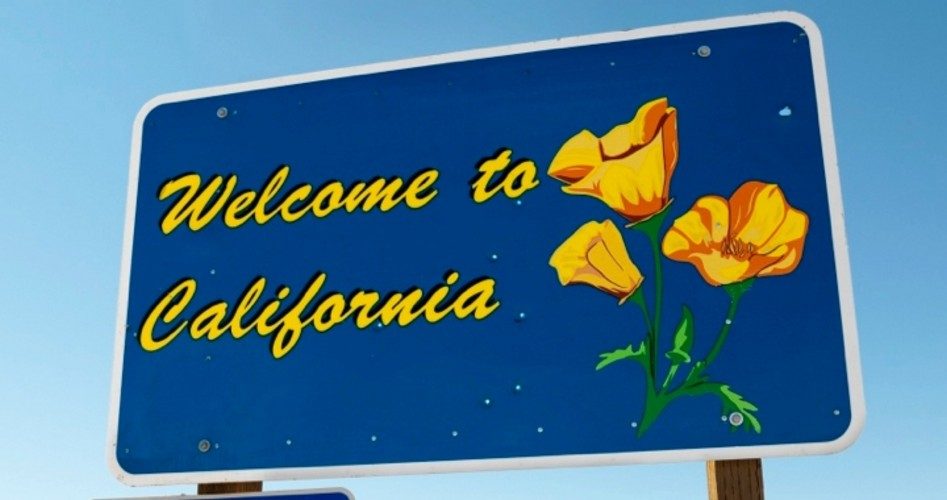
In the race into race madness, California may lead the pack. A case in point is the state’s Proposition 47, which seeks to address black Americans’ “overrepresentation” (a propaganda term) in the court system and jails.
Instituted in 2014, the proposition’s effect is now apparent. As Liberty Nation’s Tess Lynne reported Friday, referencing a study on San Francisco, “Black Americans only account for 6% of the city’s population, yet prior to Prop. 47, they represented 43% of those jailed. After the measure’s passage, that number dropped to 38%.”
Lynne then quoted the San Francisco Chronicle: “The study also found that black defendants had been given sentences averaging 3.4 months longer than white defendants — a disparity caused by factors that include pretrial detention and criminal history, which disproportionately affect African Americans. However, since Prop. 47, that discrepancy in sentence lengths has dropped by half, according to the report.”
How was this accomplished? Lynne explains, “Prop. 47 reduced some nonviolent crimes from felonies to misdemeanors and allowed for those previously convicted of said felonies to be resentenced. How does this relate to racial discrepancies, you might ask? It was designed to target a specific race.”
In other words, instead of having punishment fit the crime — an imperative of justice — Golden State punishment now fits a racial agenda.
The mentality driving this is nothing new, mind you. For example, I reported in 2010 on an Obama administration policy directed toward equalizing the suspension and expulsion rates of black and white students. Not only did this present the problem of cataloguing racial identities (think: a half-white man who becomes an all-black presidential candidate for political benefit), but, shocker of shockers, it also led to increased danger and criminality in schools, with even students who violently attacked teachers not being expelled.
As for this expelling of reason, assuming that races’ different rates of punishment are due to unjust discrimination only makes sense if you believe “that black boys cannot possibly be misbehaving more often than Asian American girls,” as Professor Thomas Sowell put it in 2014. Whether nature, nurture, or nebulously understood, group differences exist.
The same race-baiting propaganda was evident in the controversy over New York City’s erstwhile stop-and-frisk program. It caused outrage when then-mayor Michael Bloomberg said that he thinks city police “stop whites too much and minorities too little.” In reality, 87 percent of those stopped were minorities. But was this unreasonable? In NYC, 96 percent of all crime and 98 percent of gun crime are committed by blacks and Hispanics.
But if Prop. 47 makes sense — if punishment really should be meted out based on quota — we have much work to do. No one mentions that men and young people, and whites relative to Asians, are “overrepresented” in various crime categories as well. So why not also try to equalize the numbers between the sexes, the age groups, and whites and Asians? After all, the supposition is that these disparities result from unjust discrimination and not unequal perpetrator predation, right?
Ah, yes, I forgot: Some overrepresentations are more equal than others. Of course, that’s where the real unjust discrimination here lies.
While most people don’t support such unfair racial agendas, many will say that reducing the punishment for “nonviolent” crime is positive. But as Lynne points out, the crimes in question are ones that still warrant severe punishment. Just consider the list she provided of the main “deflated felonies”:
• Shoplifting, where the value of property stolen does not exceed $950
• Grand theft, where the value of the stolen property does not exceed $950
• Receiving stolen property, where the value of the property does not exceed $950
• Forgery, where the value of forged check, bond or bill does not exceed $950
• Fraud, where the value of the fraudulent check, draft or order does not exceed $950
• Writing a bad check, where the value of the check does not exceed $950
• Personal use of most illegal drugs
Do note that bad seeds (or bent twigs, as the case may be) generally don’t go from no crime to serious crime overnight; it’s usually a progression, with one trespass leading to another. And not nipping matters in the bud, or at least as soon as possible, emboldens criminals and causes them to graduate to ever more serious acts.
This is also why “criminal history,” cited as a reason for the disparate sentences of blacks and whites, is considered. The best predictor of future behavior is past behavior, and a long rap sheet indicates that the aforementioned progression is in force — and should be forcefully stopped. Thus did California enact a “three strikes” law in 1994.
Crime has risen in the Golden State since 2014, after having declined for many years, perhaps because of Prop. 47 and other criminal-justice reforms. But no matter. If proportionality in punishment really is a greater imperative than justice, we should realize that subtracting black, male, and young transgressors from the system may not be enough. So maybe some white, Asian, female, and older leftists will be willing to do their part, and a stretch in the state pen, to achieve Equality™. All they need do is identify as a criminal for a day.



